Structured Generation with LLMs(2):Function Calling,不止于agent
在structured generation第一期,笔者介绍了基于prompt的Kor。Kor是对LLM的一层封装(prompt+parse),适用于结构化抽取/生成场景。
本期文章,笔者介绍Function Calling,并将其用于structured generation。
Function Calling(又称为Tool Calling,后文统称为FC)是构建agent的基石,也是各大LLM厂商的标配功能。要做到好的FC,LLM要能做到:
- 理解任务与function/tool的关系,知道是否要调用、需调用哪些function/tool、是否缺必要参数;
- 返回结构化内容,包括function name、arguments(json格式)。
本文主要关注FC的第二个能力,即structured generation能力。
FC的原理
我们无法准确知道,闭源模型是如何实现FC的,但开源模型能为我们提供思路。
这里以mistral近期发布的12B模型 — Mistral-Nemo-Instruct-2407[1]为例,初步研究其实现方式。
从一个简单的FC例子入手:
- tool是经典的
get_current_weather,schema如下
Function(
name="get_current_weather",
description="Get the current weather",
parameters={
"type": "object",
"properties": {
"location": {
"type": "string",
"description": "The city and state, e.g. San Francisco, CA"},
"format": {
"type": "string",
"enum": ["celsius", "fahrenheit"],
"description": "The temperature unit to use. Infer this from the users location."},
},
"required": ["location", "format"],
})- 用户query:What’s the weather like today in Paris and Beijing? I prefer Celsius format.
打印出来prompt如下:

在input侧,mistral-nemo的做法是直接将用户提供的tool schema转为string,并包裹在特殊的tag(AVAILABLE_TOOLS)之中,然后插入到user query之前。
既然都是组装Prompt,我们拿它和Kor的Prompt做个对比:
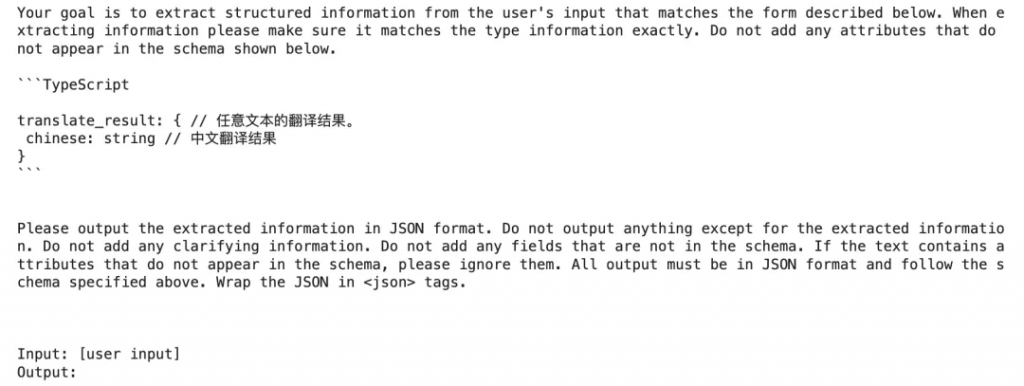
可以发现,mistral-nemo的prompt更精简(不包含Your goal is …. 、All output must be in JSON format…. 等内容)。
这就是微调模型与通用模型的用法差异:
- mistral-nemo在fine-tuning时,按照这样的格式进行训练,FC的“要求”已经被encode到模型的参数中去了;
- Kor是第三方实现,无从得知模型的训练细节,只能依靠模型的通用In Context Learning能力,因此需要把“要求”写清楚,于是prompt细节较多。
接着,我们来看output侧。
mistral-nemo的输出结果如下:

看起来,这是一个普通的text generation过程,通过特殊标记(TOOL_CALLS)来表明,这是一个tool_call message,而非常见的text message;同时nemo支持同时call多个tools,每个call为一个字典,其中包含function name和arguments参数(json格式)。
总结一下,mistral-nemo这样实现FC:
- 将tools按照特定的template,组装到prompt中去;
- LLM输出时,也遵循特定的template,call tool时加入特殊标记(TOOL_CALLS),并返回name和arguments。
通过分析mistral-nemo,可以猜测,各家LLM公司有自己的FC prompt template,既体现在input侧,也体现在output侧。
练习时刻
动手实践是学习的好方法,本期我们仍然选用第一期的2个练习(中文翻译器、评价解析)。
练习部分的所有代码,都已整理在下方git,建议读者实际运行代码来学习:
https://github.com/duanyu/structured_generation_with_llm/blob/main/Lecture2_Function_Calling.ipynb
考虑到排版,笔者直接将截图贴在下面。
练习1:中文翻译器
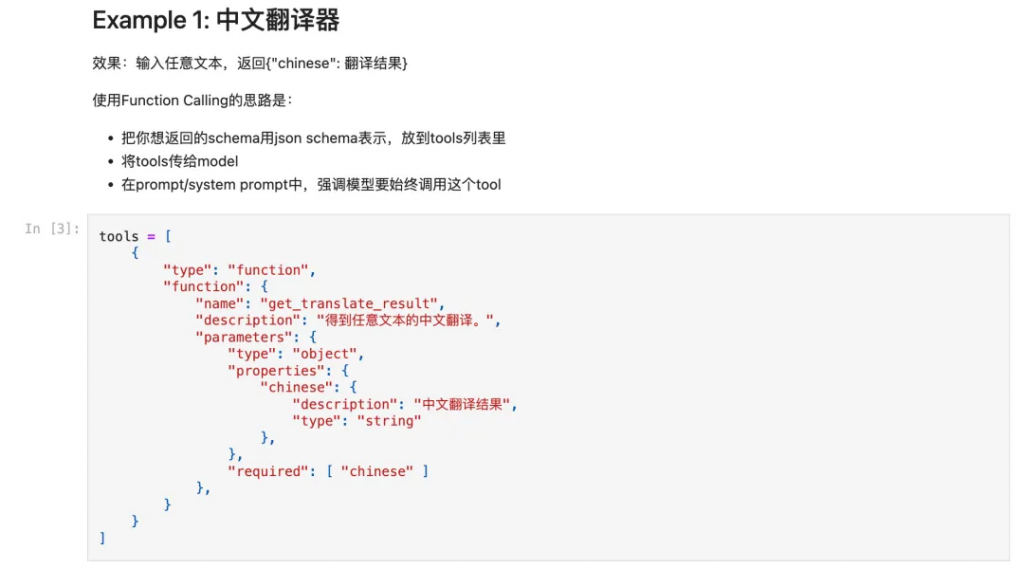
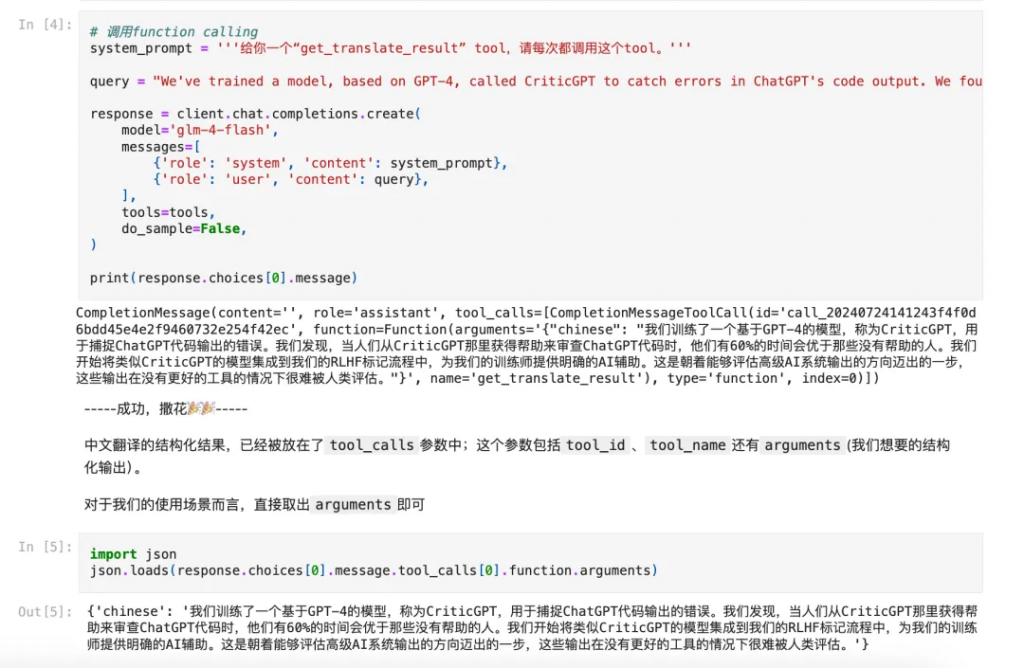
练习2:评价解析
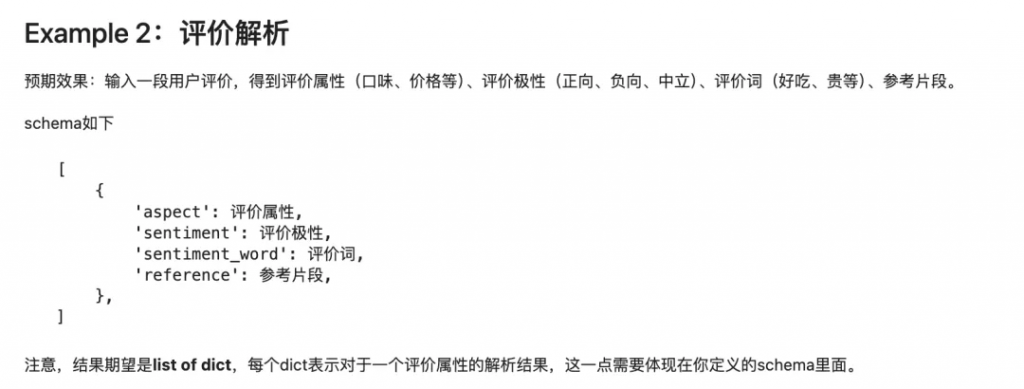
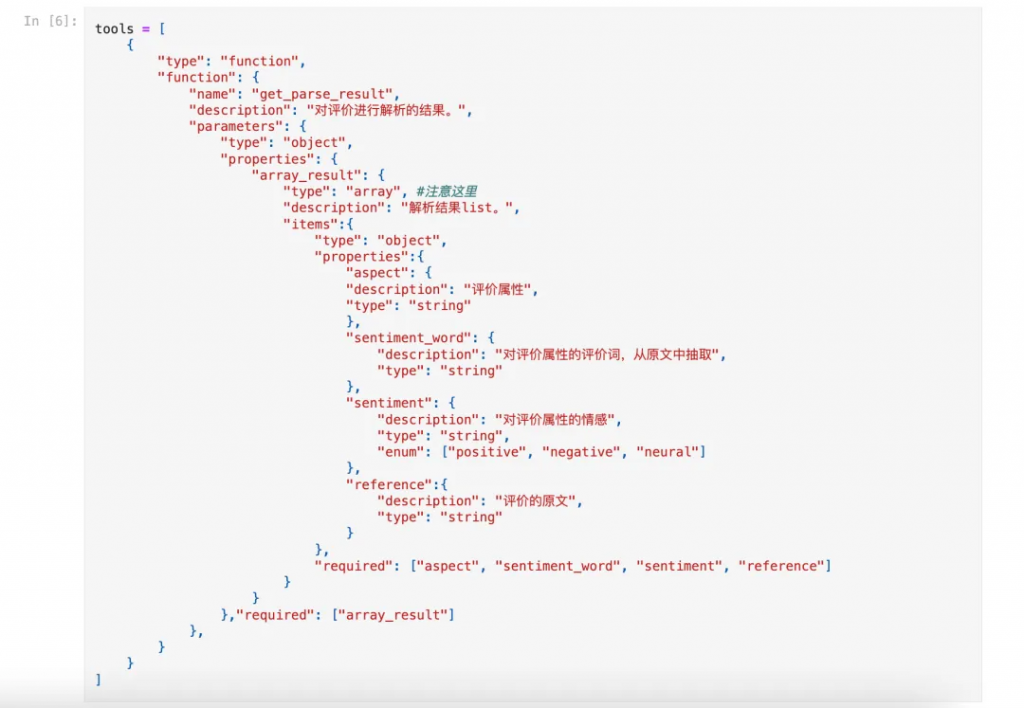
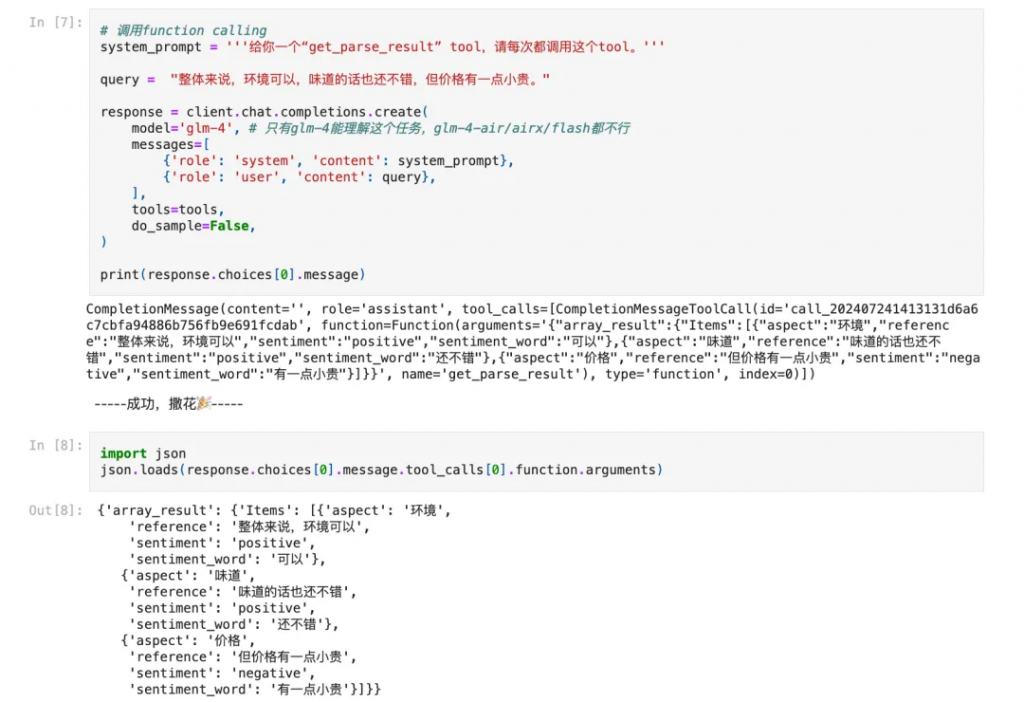
总结
本文介绍了第二种进行Structured Generation的技术:Function Calling。FC是Agent的基石,structured generation则是“副产品”;读者在实际使用中,可以将FC与Kor(或者自己写的prompt)做对比,选择效果更好的方案。
需要提到的是,FC虽然经过了fine-tuning,输出结构的稳定性有一定保证,但若未使用constrain decoding技术,那么仍然不是100%鲁棒的;同时,笔者在练习中发现,当使用glm-4-flash/air/airx模型时,FC难以有效加入few-shot examples,但在第一期练习中,glm4-9b-chat + Kor对few-shot examples十分友好,这可能是FC的一个问题(但也可能是用法不对,欢迎有经验的读者指正)。
文章转自微信公众号@漫谈NLP
最新文章
- 如何使用 Google News API 获取实时新闻数据
- 理解API网关在微服务架构中的作用
- 交叉熵的Numpy实现:从理论到实践
- Google DeepMind发布 Genie 3与Shopify:2小时上线电商3D样板间实战
- Gemini Deep Research 技术实战:利用 Gemini Advanced API 构建自动化的深度研究 Agent
- FLUX.1 Kontext API 使用完全指南:解锁文本驱动的智能图像编辑
- 如何防范User-Agent信息伪装引发的API访问风险
- 苹果支付流程:从零开始的接入指南
- 全面掌握 OpenAPI 规范:定义、生成与集成指南
- 深入解析granularity是什么?颗粒度中文详解
- 微服务架构中的API网关简介 – IMESH
- REST API命名规范的终极指南:清晰度和一致性的最佳实践